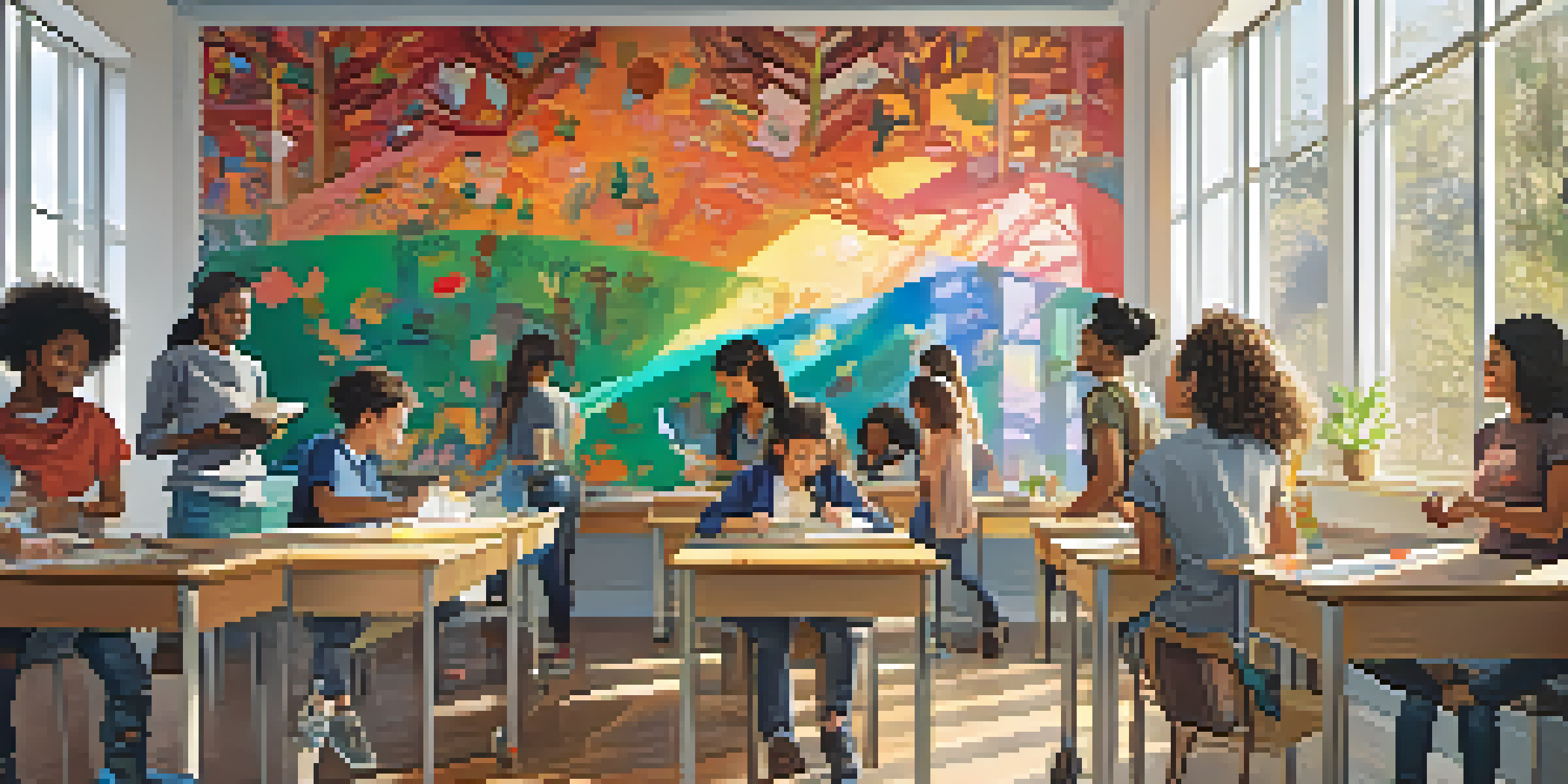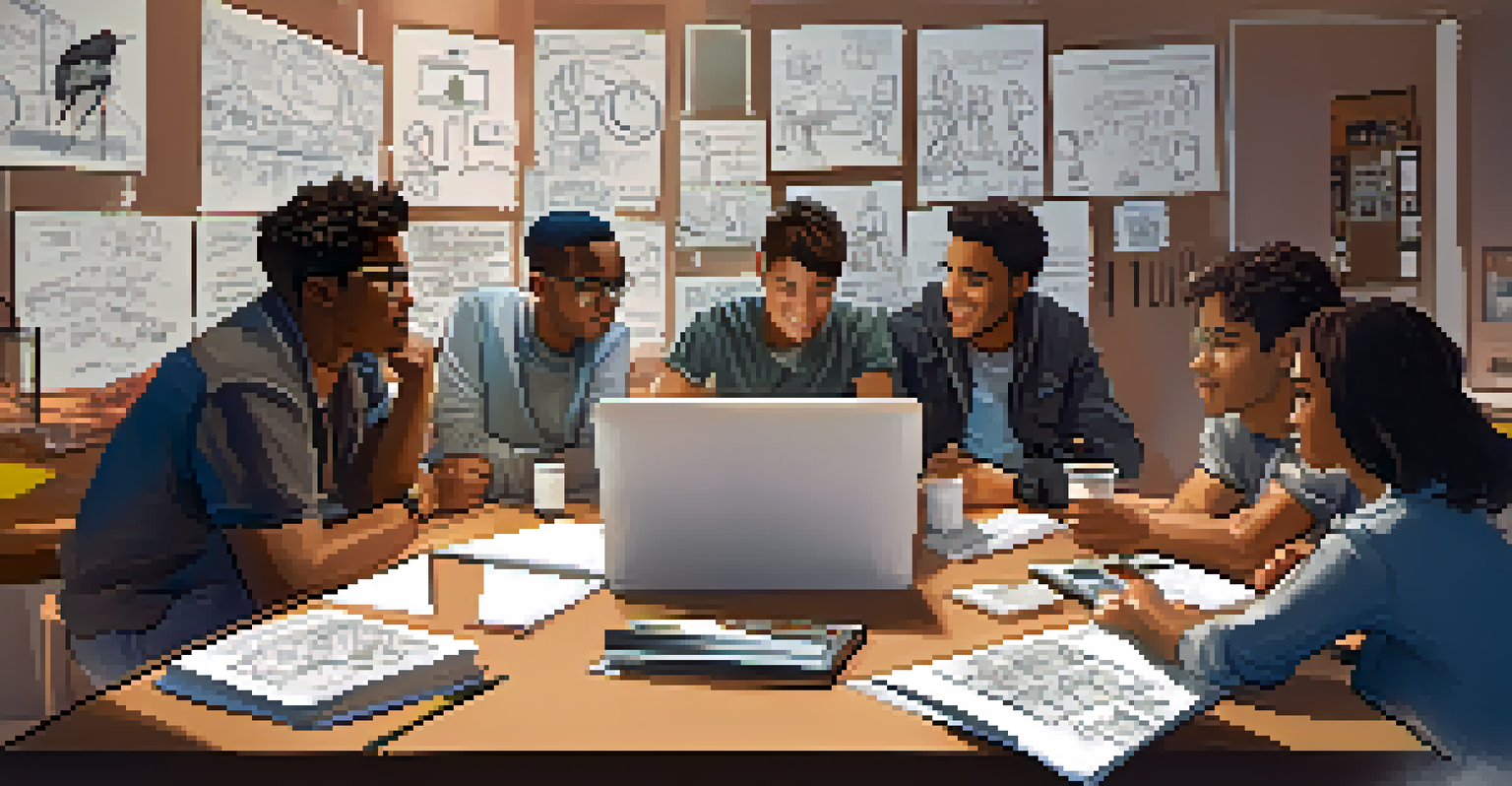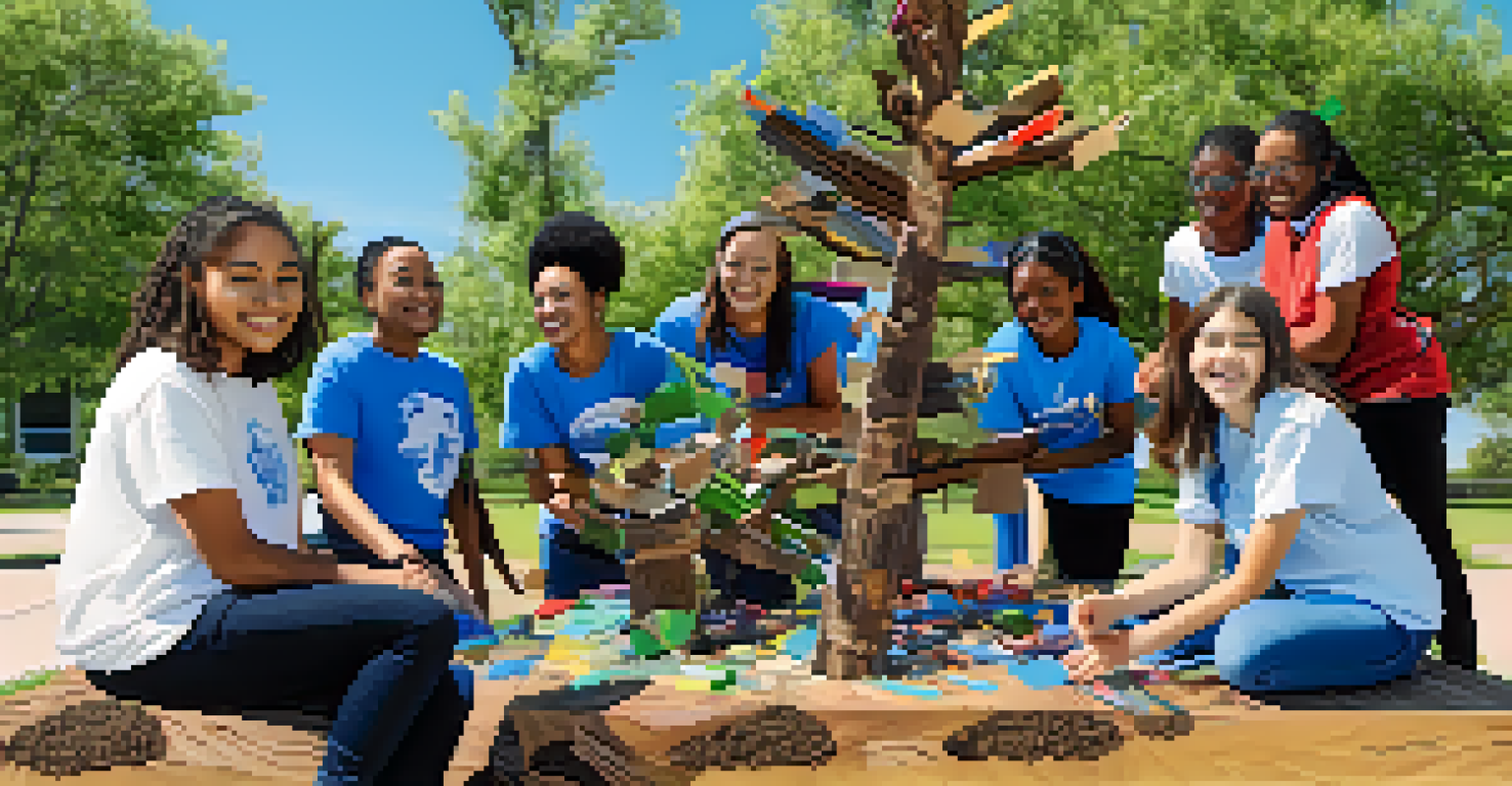How Art Education Encourages Collaboration in Learning

The Role of Art in Collaborative Learning Environments
Art education serves as a vibrant backdrop for collaboration, fostering teamwork among students. When students engage in creative projects, they often rely on each other’s strengths and perspectives. This shared experience enhances not only their artistic skills but also their ability to communicate and cooperate effectively.
Art is the most beautiful of all lies.
For instance, during a group mural project, students must discuss ideas, delegate tasks, and provide feedback to one another. This interaction mirrors real-world scenarios where collaboration is essential, preparing students for future teamwork in any field. Art becomes the common language that bridges differences and builds connections.
As students collaborate on art projects, they learn to appreciate diverse viewpoints, which can lead to innovative solutions and creative breakthroughs. The flexibility of art allows for various interpretations and expressions, encouraging open dialogue and mutual respect among peers.
Enhancing Communication Skills Through Art
One of the most significant benefits of art education is its ability to enhance communication skills. Students must articulate their ideas and intentions clearly when collaborating on creative projects. This practice not only helps them express themselves but also teaches them to listen actively to the contributions of others.

Consider a scenario where students are tasked with creating a short film. They must share their vision, discuss character development, and provide constructive criticism. Such dialogues cultivate an environment where effective communication becomes second nature, a skill that transcends the art classroom.
Art Enhances Teamwork Skills
Collaborative art projects foster communication and cooperation among students, equipping them with essential teamwork skills.
Furthermore, as students work together on artistic endeavors, they learn to navigate conflicts and find common ground. This process strengthens their interpersonal skills, making them more adept at handling disagreements or differing opinions in any collaborative setting.
Building Trust and Relationships Through Team Projects
Art education creates an atmosphere where trust can flourish among students. When working on group projects, students rely on each other to contribute equally and support one another. This reliance fosters a sense of accountability and encourages them to build strong relationships based on mutual respect.
Creativity takes courage.
For example, in a theater class, students must trust their peers to deliver lines and cues effectively. This trust not only enhances the quality of their performance but also solidifies friendships and camaraderie within the group. As they share successes and challenges, their bonds deepen.
Developing trust through collaborative art projects also allows students to take creative risks. They feel safe to express their ideas without fear of judgment, knowing their peers will support them. This nurturing environment is crucial for both personal growth and collective achievement.
Encouraging Critical Thinking and Problem-Solving Skills
Collaborative art projects often present challenges that require critical thinking and problem-solving skills. Students must brainstorm solutions together, assess different approaches, and decide on the best course of action. This collaborative decision-making process encourages them to think outside the box.
For instance, when designing a stage set for a school play, students might face budget constraints or material limitations. Working together, they can explore creative alternatives, like using recycled materials or innovative design techniques. This experience teaches them to view challenges as opportunities for creativity.
Building Trust Through Collaboration
Working on group art projects cultivates trust and strong relationships, allowing students to take creative risks in a supportive environment.
Through these problem-solving experiences, students learn to analyze situations from multiple angles. They become more adaptable and resourceful, skills that are invaluable in both academic and professional contexts.
Fostering Inclusivity and Diversity in Learning
Art education naturally promotes inclusivity and diversity, as it welcomes various perspectives and cultural expressions. In collaborative projects, students from different backgrounds come together to share their unique ideas and experiences. This diversity enriches the learning environment and fosters a sense of belonging.
For example, in a community art project, students may incorporate cultural elements from their backgrounds into a collective piece. This collaboration not only celebrates diversity but also educates students about different cultures, promoting empathy and understanding.
As students learn to value each other's contributions, they develop a broader worldview. This inclusivity nurtures a supportive community where every voice is heard, paving the way for more meaningful connections and collaborations.
Developing Leadership Skills in Collaborative Settings
Art education provides numerous opportunities for students to develop leadership skills through collaboration. In group projects, students often need to assume various roles, sometimes leading discussions or directing specific tasks. This dynamic helps them discover their strengths and interests in a supportive environment.
For instance, when organizing an art exhibition, students might take turns leading different aspects, such as marketing or setup. This experience not only empowers them but also teaches them to motivate and inspire their peers, essential qualities of effective leaders.
Promoting Inclusivity in Art Education
Art education embraces diverse perspectives, fostering a sense of belonging and encouraging empathy among students from various backgrounds.
As they navigate these roles, students learn the importance of collaboration and inclusivity in leadership. They understand that great leaders not only guide but also listen and value the contributions of their team.
Creating a Shared Sense of Accomplishment
Collaborative art projects culminate in a shared sense of accomplishment that can be incredibly rewarding. When students work together to create something meaningful, they experience pride in their collective effort. This shared achievement fosters a sense of community and belonging within the classroom.
For example, after completing a group sculpture, students often celebrate their hard work together, reinforcing their connections and camaraderie. The recognition of their efforts, both as individuals and as a team, boosts their confidence and motivation for future projects.

Moreover, this sense of accomplishment extends beyond the classroom. Students learn to appreciate the value of teamwork, understanding that great achievements often come from collaboration. This mindset will serve them well in their academic pursuits and later in their careers.